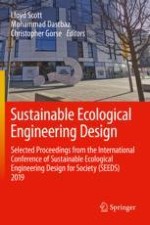2020 | OriginalPaper | Buchkapitel
Contractor’s Readiness for LEED Requirements in Ireland: Factors for Consideration
verfasst von : Cian Ryan, John P. Spillane
Erschienen in: Sustainable Ecological Engineering Design
Aktivieren Sie unsere intelligente Suche, um passende Fachinhalte oder Patente zu finden.
Wählen Sie Textabschnitte aus um mit Künstlicher Intelligenz passenden Patente zu finden. powered by
Markieren Sie Textabschnitte, um KI-gestützt weitere passende Inhalte zu finden. powered by
